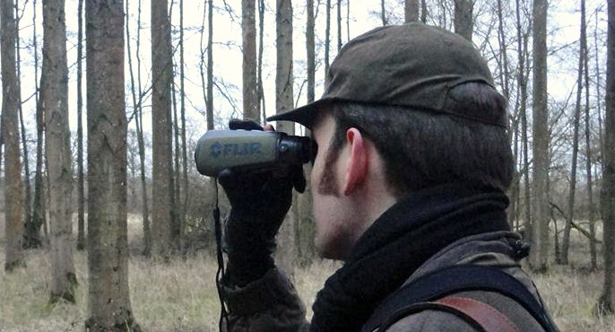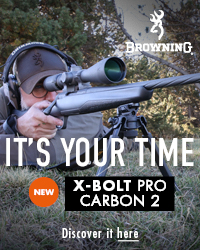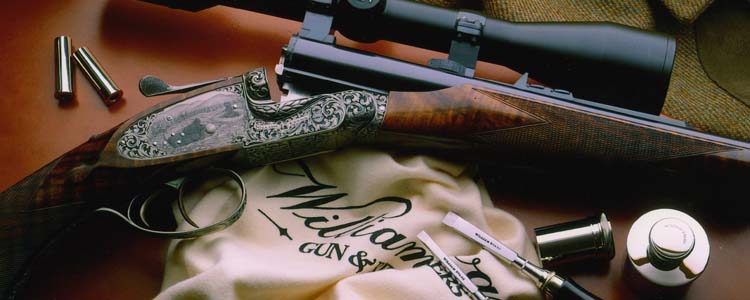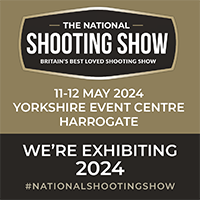FLIR Scout PS Thermal Imaging Camera Review
Just how useful are Thermal Imaging Cameras to Deer Stalkers? Matthew Rogers investigates an offering from FLIR.
Deer stalking is a sport which requires the very best; after all, the principle perusing of the sport culminates in an animal losing its life, so it's important not to discharge this responsibility lightly, or with tools that aren't up to the job.

(Matthew Scans some woodland with the FLIR Scout PS)
Peter is the resident County Deer Stalking expert on rifles, ballistics and ecology of deer themselves; he corners most of the market! But today I get to outflank him and review the offerings of the excellent FLIR Scout PS. Great! So why the very serious preamble about responsibility and efficiency?
Because the FLIR is an absolute market leader in what they do. Their equipment has always been at the cutting edge of thermal imaging, thus making them the 'go-to' vendor for these solutions. For those not familiar with the concept, thermal imaging allows you to look through an optic and see body heat displayed in a colour that contrasts heavily with the ambient background. Thus, a deer in fog, at dusk, amongst a broken tree line, at 100m, will show up bright red!
The sheer raw potential for the Scout PS often over-awes and confuses some stalkers. It's difficult to conceptualise the prospect of seeing a bright red outline where, actually, your friend had been scanning for ten minutes previously with their £1500 binoculars and still not seen it. Equally, when people do not fully understand the technology, they begin to assume you can solve all sorts of stalking problems with it - identifying animals hidden *behind* solid objects, or finding animals that are just not there!
The Scout PS, then, is a device for the serious stalker and one who recognises this tool isn't a Leatherman multi-tool. I use this analogy deliberately as its illustrative of the scenario. Every shooting trip I find a use for my Leatherman, be it sawing some branches to make the high seat view clearer to popping the lid from a bottle of lemonade. None of these things needed the Leatherman explicitly, I could have gotten by regardless. But to the contrary, ten minutes into a stalk, the FLIR Scout PS had picked up a strong heat signature of a Muntjac about twenty yards to the left of us while we were still in brazen walking mode! That really got our attention, and, we would have missed it entirely.
On the day, we approached a relatively small patch of woodland from along a treeline. Firing up the FLIR, I quickly spotted a heat signature moving in between the trees at some 100m or so away - long before Peter had spotted it with the naked eye. Assessing the location of the animal, we decided to withdraw and work around from a better angle. Coming from along the stream, again the FLIR came into its element in spotting the heatsource between the tangle of branches. In this instance Peter went forward in front of the binoculars and was able to really act as a forward spotter before I brought up the rifle. This done, and the first shot placed, we then used it to track and follow up. Unfortunately the first shot landed a bit far forward at the base of the neck, so a second shot was needed. However, the question of where the animal was and how much it was moving was also made easier by the FLIR.
So, I chalked up a kill to the unit and actually, it helped assure a professional and humane dispatch for the doe that we would have struggled to locate otherwise. Remember, body heat shows up RED HOT against the drab grey backdrop of the woodland - if you have line of sight, it will really call it out to you.
The FLIR Scout PS is reliant on working by exception. This means it needs to make a computerised assumption of what 'normal' is as a temperature, and choose to report exceptions to this rule (eg body heat) in a different colour. We conducted a number of field tests, and found overwhelmingly that the unit performed best at night (amazing - deer everywhere by the way!), in the morning (cold, temperature dropped overnight) and on a very cold evening with a touch of snow. I can't speak to how the unit would perform at 6pm on a balmy July evening, but I would suspect it might struggle to define the heat signatures as clearly, if at all.
So where does this leave us?
Well, it leaves me with a very nice Fallow in the trunk and a clear conscience - that much is for sure. It also means that the FLIR represents a best in class tool for spotting and following up deer in either cool temperatures or times of the day whereby the temperature is temporarily lower, e.g. dawn. The Scout PS isn't an everyday, throw it in the kit bag and you'll use it on each outing, sort of device. It's a specialist tool for the dedicated and serious stalker, and frankly, you've got to have both the budget and the commitment to get the true potential from the device. If you only go out once or twice a year, it probably isn't for you, but if you make it your business to cull, it's a worthy investment.

















